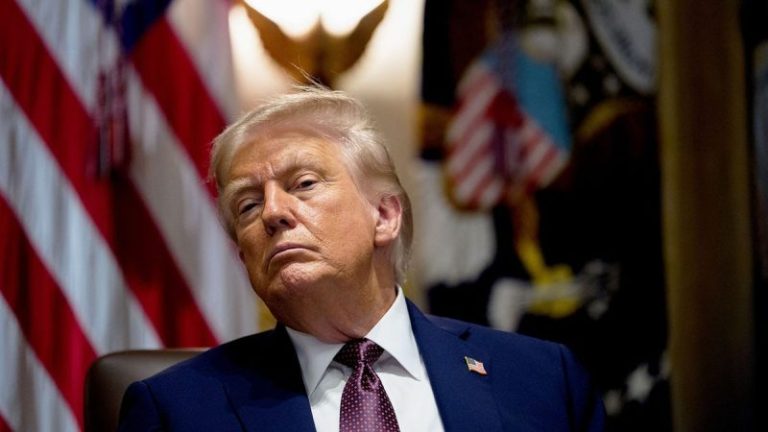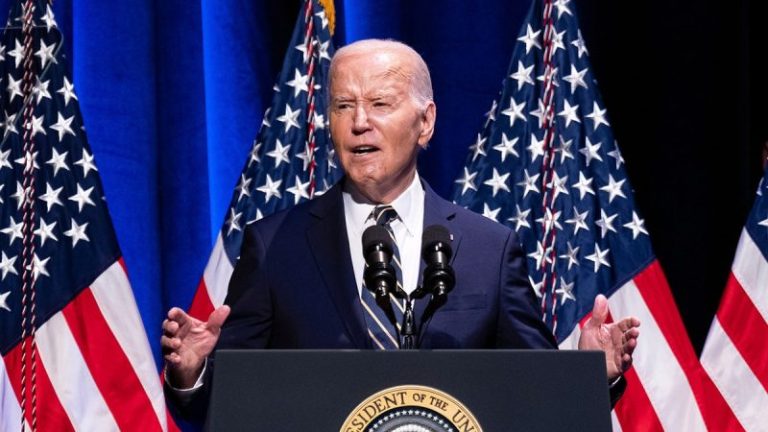Statistics Canada released its August job numbers on Friday (September 5). The report indicated a loss of 66,000 jobs in the Canadian economy and an increase in the unemployment rate to 7.1 percent from the 6.9 percent recorded in July.
The losses were primarily felt in the professional, scientific and technical services sector with a decrease of 26,000 jobs, followed by losses of 23,000 jobs in the transportation and warehousing sector and 19,000 jobs in manufacturing.
One small caveat: of the 66,000 jobs lost, 60,000 were part-time workers, while full-time employment saw little change after shedding 51,000 positions the previous month.
South of the border, the US Bureau of Labor Statistics (BLS) also released its August jobs report on Friday. The report is the first jobs report since Donald Trump fired the head of the BLS after the release of July’s labor report showed weakness trickling into the economy.
The economy added an estimated 22,000 jobs during August, well below analysts’ expectations of 75,000 new jobs. The unemployment rate also ticked up to 4.3 percent from 4.2 percent in July.
The federal workforce saw the largest job decline, losing 15,000 jobs. The mining, quarrying and oil and gas extraction sector also saw its most significant change over the last 12 months, shedding 6,000 workers.
Additionally, the BLS revised June and July’s figures. While July’s numbers rose to 79,000 added jobs from the 73,000 first reported, the agency made a significant downward revision to June’s numbers, indicating the economy lost 13,000 jobs for the month instead of gaining 14,000.
Jobs data from the last few months will play an important role when the Federal Reserve next meets on September 16 and 17 to discuss changes to the Federal Funds Rate, which is currently set in the 4.25 to 4.5 percent range. Most analysts are predicting the Fed to make a 25 point cut to the benchmark rate, with some now eyeing a larger 50 point cut.
Markets and commodities react
Canadian equity markets were mostly positive during the shortened trading week. The S&P/TSX Composite Index (INDEXTSI:OSPTX) set another new record high on Friday, closing the week up 1.7 percent to 29,050.63. The S&P/TSX Venture Composite Index (INDEXTSI:JX) did even better, climbing 3.34 percent to finish Friday at 857.25. However, the CSE Composite Index (CSE:CSECOMP) went the opposite direction, falling 5.16 percent to end the week at 158.32.
US equity markets were volatile this week, falling sharply at the open of the trading week Tuesday (September 2) before moving back into positive territory. Although the S&P 500 (INDEXSP:INX) pulled back slightly on Friday’s weak jobs data, it ultimately ended the week up 0.33 percent at 6,481.51. The Dow Jones Industrial Average (INDEXDJX:.DJI) took a larger hit Friday, and closed down 0.32 percent on the week at 45,400.87. Of the three, the Nasdaq 100 (INDEXNASDAQ:NDX) was the week’s biggest winner, rising 1.01 percent to 23,652.44.
The gold price was in focus this week as it climbed to a new record high Wednesday (September 3) on expectations of a September rate cut by the Federal Reserve and news on August 29 that a Federal Appellate court had struck down the majority of Donald Trump’s reciprocal tariffs. Gold ended the week up 4.03 percent at US$3,586.27 per ounce after the lackluster jobs report pushed gold above Wednesday’s highs.
Silver had a similarly explosive week, climbing past US$40 for the first time since 2011 and moving as high as US$41.38 on Wednesday. The precious metal finished Friday with a 3.32 percent weekly gain at US$41.07 per ounce.
On the other hand, copper was off this week, shedding 0.87 percent to US$4.54 per pound. The S&P Goldman Sachs Commodities Index (INDEXSP:SPGSCI) posted a decrease of 1.17 percent by close on Friday, finishing at 543.28.
Top Canadian mining stocks this week
How did mining stocks perform against this backdrop?
Take a look at this week’s five best-performing Canadian mining stocks below.
Stocks data for this article was retrieved at 4:00 p.m. EDT on Friday using TradingView’s stock screener. Only companies trading on the TSX, TSXV and CSE with market caps greater than C$10 million are included. Mineral companies within the non-energy minerals, energy minerals, process industry and producer manufacturing sectors were considered.
1. Carlton Precious (TSXV:CPI)
Weekly gain: 77.78 percent
Market cap: C$17.74 million
Share price: C$0.24
Carlton Precious is a mineral exploration company focused on a portfolio of precious metals projects in the Americas and Australia.
Its flagship Esquilache silver project, located in Peru, consists of two mining concessions covering an area of 1,600 hectares. Unsubstantiated records from the property indicate historic mining produced 10 million ounces of silver between 1950 and 1962. Exposed structures on the property show mineralization of silver, lead, zinc, copper and gold.
On March 19, Carlton reported assay results from a 2024 surface channel sampling program, with grades peaking at 13.45 grams per metric ton (g/t) gold and 1,018 g/t silver.
The company’s most recent announcement came on July 14, when Carlton signed an agreement with the community of San Antonio de Esquilache for the project allowing for further exploration at the property. Carlton added that its staff has designed a program of up to 40 drill holes that it expects to commence in fall 2025.
In its September 2025 investor presentation, the company stated it is submitting its drill permit applications.
2. Quantum Critical Metals (TSXV:LEAP)
Weekly gain: 73.68 percent
Market cap: C$17.31 million
Share price: C$0.165
Formerly Durango Resources, Quantum Critical Metals is a polymetallic exploration company developing a portfolio of projects in Québec and British Columbia, Canada.
Its flagship NMX East critical metals project is in the Eeyou Istchee James Bay region of Québec and lies adjacent to Nemaska Lithium’s Whabouchi mine. According to the project page, the company has drilled four holes at the property, producing a highlighted assay of 107.68 meters from surface containing average grades of 38.85 g/t gallium, 701.03 g/t rubidium, 24.98 g/t cesium and 3.61 g/t thallium.
Quantum Critical Metals has also been working to advance its Victory antimony project in Haida Gwaii, British Columbia. The site was initially discovered in the 1980s and hosts mineralization of arsenic, antimony and mercury. On August 25, the company announced it submitted an application to expand the property to 1,444 hectares.
The company’s most recent news came on Thursday (September 4), when it identified mica as a key carrier of critical minerals at its NMX project. Quantum selected samples from the 107 meter interval mentioned above, and the samples with the highest mica content returning significantly higher grades of critical metals, including gallium, rubidium, lithium and niobium.
Quantum has now sent the samples for further testing. If the testing confirms the results, stated the discovery will allow for easier removal of these elements from the rock, as the company can first isolate the mica.
3. Electric Metals (TSXV:EML)
Weekly gain: 66.67 percent
Market cap: C$79.98 million
Share price: C$0.45
Electric Metals is a mineral development company focused on advancing its flagship North Star manganese project in Minnesota, US. According to the company, the asset is North America’s highest-grade manganese resource. It plans to produce high-purity manganese sulphate monohydrate for lithium-ion batteries.
On August 26, Electric Metals released its preliminary economic assessment (PEA) for North Star. The assessment demonstrated a base-case after-tax net present value of US$1.39 billion, with an internal rate of return of 43.5 percent and a payback period of 23 months.
The report also included an updated mineral resource estimate with an indicated resource of 7.6 million metric tons of ore grading 19.07 percent manganese, 22.33 percent iron and 30.94 percent silicon, and an inferred resource of 3.73 million metric tons of ore grading 17.04 percent manganese, 19.04 percent iron and 30.03 percent silicon.
Momentum from the PEA release landed Electric Metals on this list of top performers last week, and its shares climbed even higher this week after the company announced the results of its annual and special shareholder meeting.
Shareholders approved all resolutions, including two related to Electric Metals’ plan to redomicile its business in Delaware, US. The first is continuance from the Canada Business Corporations Act to the Business Corporations Act of British Columbia. Shareholders also voted to authorize a continuance of the company to the Delaware General Corporation Law, with the condition of a successful corporate move to BC.
Electric Metals CEO Brian Savage said the change is intended to align its corporate home with the company’s mission to build a fully domestic US supply of manganese.
4. Valhalla Metals (TSXV:VMXX)
Weekly gain: 66.67 percent
Market cap: C$11.53 million
Share price: C$0.15
Valhalla Metals is a polymetallic exploration company working to advance a pair of projects in Alaska’s Ambler Mining District. Its Sun project consists of 392 claims that cover an area of 25,382 hectares.
A May 2022 technical report states that the indicated mineral resource for the project is 1.71 million metric tons of ore containing 162.96 million pounds of zinc, 55.85 million pounds of copper, 42.04 million pounds of lead, 3.3 million ounces of silver and 12,000 ounces of gold.
It also reported an inferred resource of 9.02 million metric tons containing 831.33 million pounds of zinc, 239.64 million pounds of copper, 290.26 million pounds of lead, 23.68 million ounces of silver and 73,000 ounces of gold.
The project is largely dependent on the construction of the 211 mile Ambler Access Road, which Donald Trump approved in his first term as president. Joe Biden rescinded the federal permit in 2024 due to environmental concerns.
Shares in Valhalla gained momentum this week after Congress voted 215 to 210 on Wednesday to move ahead with the project. It’s expected that the Senate will follow suit when it votes on the resolution in the next few weeks.
5. Orosur Mining (TSXV:OMI)
Weekly gain: 65.31 percent
Market cap: C$108.97 million
Share price: C$0.405
Orosur Mining is an exploration company focused on the development of early to advanced-stage assets in South America.
Exploration has revealed multiple gold deposits at its flagship Anzá gold project in Colombia, which is located 50 kilometers west of Medellin and sits along Colombia’s primary gold belt.
Orosur acquired the project, previously a 49/51 joint venture between Newmont and Agnico Eagle, in November 2024.
Since that time, the company has been working to explore the property and has made several announcements regarding its exploration efforts. The most recent came on August 26, when it reported highlights from infill drilling being carried out at the property, including one hole with 6.13 g/t gold over 71.85 meters from near surface at the Pepas gold prospect.
Orosur also owns several early-stage projects, the El Pantano gold-silver project in Argentina, the Lithium West project in Nigeria and the Ariquemes project in Brazil, which is prospective for tin, niobium and rare earths.
On Monday (September 1), Orosur reported that in August, it had issued 3.28 million new common shares for a total consideration of US$174,711.67 following its exercise of the same number of warrants. It also stated that 31.51 million warrants remained outstanding.
FAQs for Canadian mining stocks
What is the difference between the TSX and TSXV?
The TSX, or Toronto Stock Exchange, is used by senior companies with larger market caps, and the TSXV, or TSX Venture Exchange, is used by smaller-cap companies. Companies listed on the TSXV can graduate to the senior exchange.
How many mining companies are listed on the TSX and TSXV?
As of May 2025, there were 1,565 companies listed on the TSXV, 910 of which were mining companies. Comparatively, the TSX was home to 1,899 companies, with 181 of those being mining companies.
Together, the TSX and TSXV host around 40 percent of the world’s public mining companies.
How much does it cost to list on the TSXV?
There are a variety of different fees that companies must pay to list on the TSXV, and according to the exchange, they can vary based on the transaction’s nature and complexity. The listing fee alone will most likely cost between C$10,000 to C$70,000. Accounting and auditing fees could rack up between C$25,000 and C$100,000, while legal fees are expected to be over C$75,000 and an underwriters’ commission may hit up to 12 percent.
The exchange lists a handful of other fees and expenses companies can expect, including but not limited to security commission and transfer agency fees, investor relations costs and director and officer liability insurance.
These are all just for the initial listing, of course. There are ongoing expenses once companies are trading, such as sustaining fees and additional listing fees, plus the costs associated with filing regular reports.
How do you trade on the TSXV?
Investors can trade on the TSXV the way they would trade stocks on any exchange. This means they can use a stock broker or an individual investment account to buy and sell shares of TSXV-listed companies during the exchange’s trading hours.
Article by Dean Belder; FAQs by Lauren Kelly.
Securities Disclosure: I, Dean Belder, hold no direct investment interest in any company mentioned in this article.
Securities Disclosure: I, Lauren Kelly, hold no direct investment interest in any company mentioned in this article.
This post appeared first on investingnews.com










